
table of contents
- Bringing channels
- Screw edge
- Sheep wool
- Collecting
- electric fence
- Beer traps
- Food shortages for beneficial insects
- Keep paths clear
- Promote beneficial organisms
- Ineffective methods
- frequently asked Questions
The raised bed is a good barrier against snails, but, depending on the type of construction, not completely safe from the voracious animals. With simple methods, the snails can be driven away in the long term in raised beds.
In a nutshell
- Mechanical methods prevent slugs from entering the raised beds
- Collection is a sustainable method of getting rid of the pests
- The soil and plants should be checked for snail infestation and eggs
Bringing channels
Raised beds without barriers are generally not an obstacle for snails, even if they take longer to climb the beds. In addition to the fact that the snails can crawl up the beds, there are other ways of bringing in the beds:
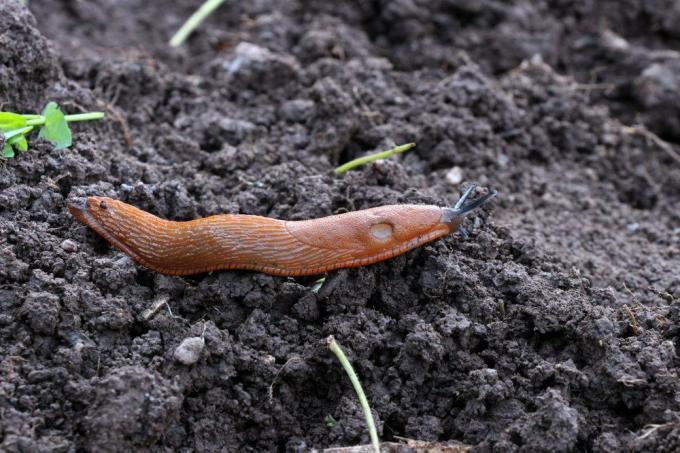
- bought young plants
- Compost soil
- Mulch material
- inferior vegetable soil
Tip: Before you fill up purchased soil or compost soil, you should sterilize it. It is placed in small quantities in the oven at at least 120 ° C for 30 minutes, which not only kills pests, but also pathogens and fungi.
Screw edge
Mechanically, the easiest way to keep away the snails that try to penetrate from the outside is with a so-called snail edge. This is a tinplate that has multiple bends that the snails cannot negotiate.
When buying, it is important to make sure that the edge of the screw is really bent several times. A bent profile is not sufficient. At least two folds, which are always bent inwards, can no longer be overcome by the snails.
Advantages of a screw edge:
- available in different lengths
- can be cut to size if required
- easy construction
- reusable
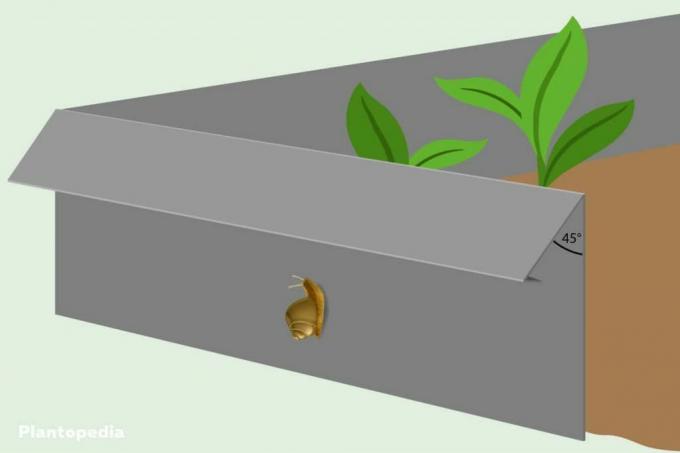
Note: When buying a new raised bed, you should make sure that it already has a snail edge that the animals cannot overcome. A simple edge made of wood is not enough and is easy for them to overcome.
Sheep wool
Once the slugs are in the raised beds, it is important to protect the crops directly. Sheep's wool has proven to be helpful here. It is important that it is raw wool that has not been grown. Often this wool is cheap to get from sheep owners, especially from those who primarily focus on milk and meat products. You still have to shear the sheep, otherwise the animals would overheat in summer, but they usually throw the wool away.
The raw wool is laid out thickly around the plants to be protected. The nudibranchs, but also other types of snails, avoid the wool fat and the smell of unwashed sheep's wool. A pleasant side effect of sheep's wool is that it can easily remain in the raised beds because it is a long-term fertilizer.
Sheep wool contains the following nutrients:
- nitrogen
- phosphorus
- potassium
- sulfur
As a rule, it is sufficient if a thick ring is laid out with sheep's wool for each crop. Only in very rainy years, when the water washes away the wool grease or if the watering is frequent, the wool protective ring has to be renewed or replaced every two months. can be added.

Collecting
The easiest way to biologically control the snails in the raised bed is to collect them. Especially in the evening or after the rain, they venture out of their hiding places and are easy to find. It also helps to offer hiding places. The animals seek shelter underneath during the day and are easy to find.
The following are suitable hiding places:
- short wooden boards or slats
- old clay roof tiles
- upturned flower pots
- old plates or cups
For many hobby gardeners, the question now arises as to what to do with the slugs that have been collected. One possibility is to release the animals in nature like in a more distant meadow. Even if the slugs cause damage in the raised beds, they are an important source of food for other animals such as hedgehogs and frogs. In the raised bed, however, the path of these beneficial insects remains blocked, which is why it makes sense to release the nudibranchs that have been collected elsewhere.
If you want to put an end to the slugs in the context of control, you should choose a method that leads to the death of the animals as quickly as possible. The nervous system of these molluscs works differently than that of humans. Methods such as cutting them up or pouring hot water over them are not very painful for them and should therefore be avoided.
electric fence
One way of combating this is to install an electric fence. This is a metal band that is energized. The strength of the current can be very low, which means that humans or other animals cannot or only maximally perceive it as a tingling sensation.
The fence can be operated using a standard 12 volt battery. Depending on the size of the battery, it can last up to a week without being charged. The electric fence is re-attached around the raised bed and is primarily intended to prevent the snails from getting into the raised beds at all.
Beer traps
The classic beer trap is a method of fighting that is also suitable for raised beds. Beer traps are easy to build, but the snails that land in the traps usually develop unpleasant odors.
When using beer traps, do the following:
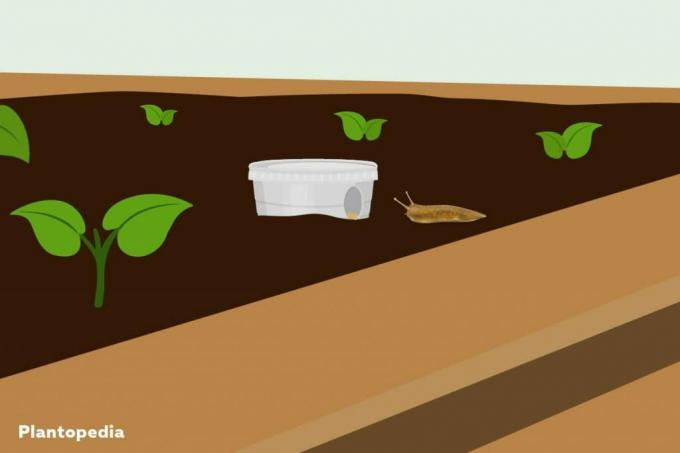
- Cut a 3 cm hole in the upper third of a beaker with a lid
- Clean cut edges
- Bury the cup in the raised bed up to the cut hole
- Fill halfway with beer
- close with lid
It is important that the opening is large enough for the slugs. In the raised beds, there is little risk that other animals, such as frogs, accidentally get into the trap and drown in it. However, it cannot be ruled out that insects may also die in it.
Food shortages for beneficial insects
Nudibranchs are not so easy to drive away in raised beds. It would be biological if they were combated with beneficial insects. Due to the height, beneficial insects have a hard time getting to the beds.
Raised beds can also become a trap for useful snail species such as the tiger snail or shell snails such as the Roman snail. Tiger snails eat nudibranchs and, like Roman snails, also their eggs. They also feed on dead plant material, of which there is often not very much in the raised beds.
Due to the shortage of food in raised beds, it can happen that such beneficial insects also eat the vegetables. When fighting, you should make sure that you expose these beneficial insects in a suitable place. Roman snails in particular are not allowed to be killed, as they are even protected in some regions.
Keep paths clear
One way to drive away the slugs so that they don't even get into the beds is to look after the paths in between. Anyone who has lawn should mow at least every two weeks and also make sure that no tufts of grass remain near the raised beds. If you want to drive away the nudibranchs, choose material for trails they don't like.
This includes:
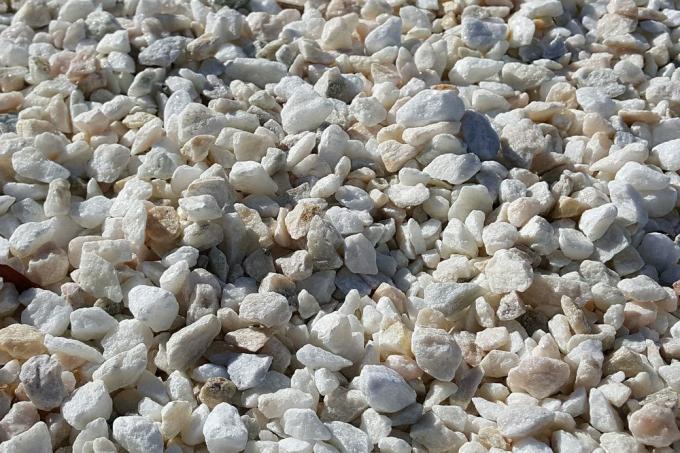
- sand
- gravel
- gravel
Dark gravel in particular heats up during the day, which makes it too warm for the snail. The heat indirectly promotes growth, but the high temperatures drive the reptiles away and they move to more protected areas.
Promote beneficial organisms
Combating with beneficial insects would be biological, but this does not work so well in raised beds. However, beneficial insects can indirectly help to reduce the number of snails in the garden in general. There are fewer snails looking for their way into the raised beds, but fewer animals are brought in via the compost or mulch material.
Helpers in the fight against slugs are:
- Hedgehog
- Frogs and toads
- Slow worms
- Shrews
- Blackbirds
- Magpies
- Starlings
Ineffective methods
There are many methods that are mechanical that are designed to deter reptiles from eating the crop in raised beds. This primarily includes copper. The slime of all snail species is said to cause a reaction on contact that triggers an electric shock and is supposed to drive them away. In practice, however, such copper strips have little effect.
Materials that have a pointed or unpleasant surface also have little or no effect.
Attempts to ward off slugs in raised beds are in vain, for example with:
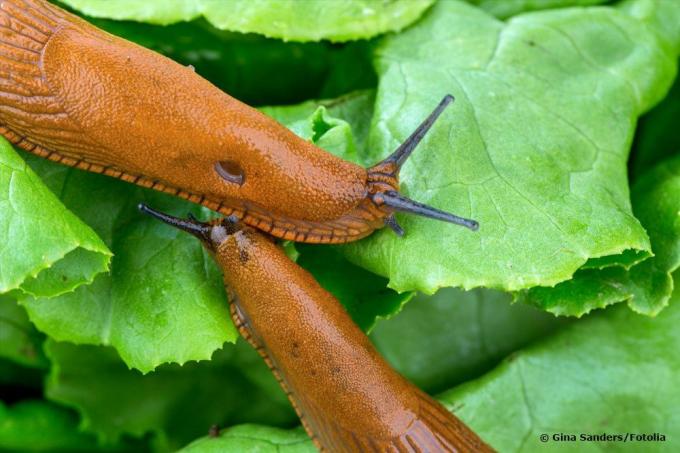
- crushed eggshells
- Spruce needles
- Sawdust
The animals are reluctant to overcome these barriers as long as they are not moist. As soon as it has rained, these hurdles in the raised bed are usually no longer a problem for you.
frequently asked Questions
No, a beer trap cannot be secured in such a way that it cannot become a deadly trap for other animals such as insects.
As soon as a copper fence is energized, it works like a normal electric fence and the slugs are hit when trying to get over it.
